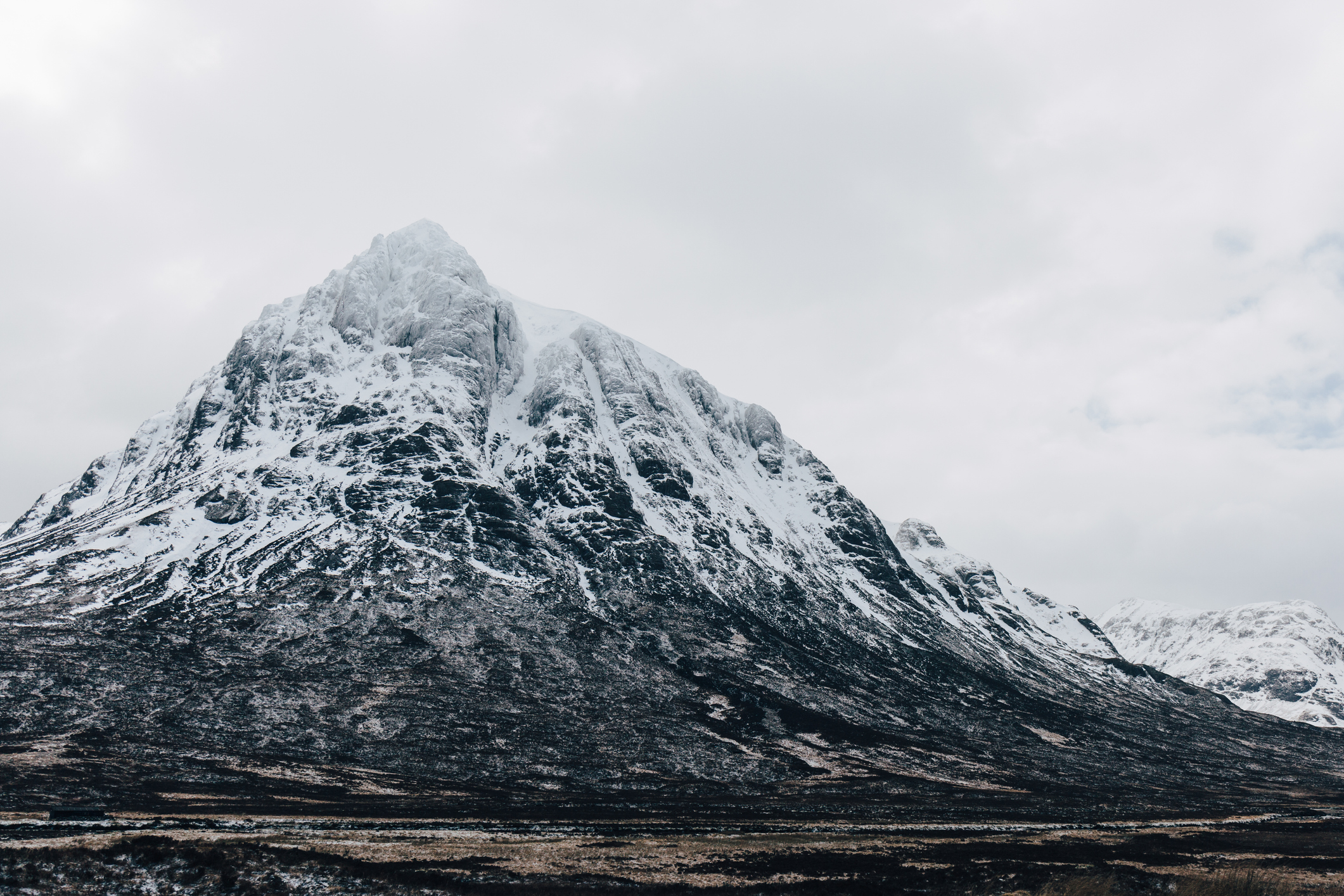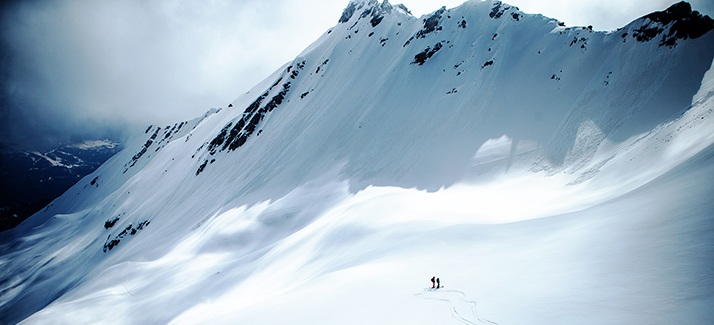How to Choose an Avalanche Transceiver
An avalanche transceiver is an essential part of any backcountry safety setup along with your shovel and probe, so it’s vital you find the right one for you and know how to use it. Read our guide to find out the basics of using an transceiver:
What This Guide Will Teach You
This guide will take you through the following key information:
- What is an avalanche transceiver?
- Types of avalanche transceivers
- How much are avalanche transceivers?
- Our range of avalanche transceivers
- How to use an avalanche transceiver
- The importance of RECCO® reflectors
Our stores also stock a wide range of avalanche transceivers. If in doubt about the best gear for you, visit us in-store for expert advice and recommendations from our experts.

What is an Avalanche Transceiver?
An avalanche transceiver—also known as a beacon—is a small electronic device that emits a radio signal. In the event of an avalanche, this signal can be detected by other transceivers in search mode, helping rescuers locate buried victims quickly and efficiently. All modern transceivers operate on the international standard frequency of 457 kHz, ensuring compatibility across brands and models.
Transceivers are a core part of the avalanche safety trio, alongside a shovel and probe. Together, these tools maximise your chances of survival if caught in a slide.
Most European and North American resorts have companies that offer avalanche safety training where you learn about the dangers of backcountry, how to lessen them, and further understanding of snowpack and stability and avalanche safety equipment and rescue. You can also find these classes in most UK snow domes.
Why Do You Need an Avalanche Transceiver?
Venturing into the backcountry without an avalanche transceiver is not only risky but also puts others in danger. Avalanches can strike without warning, and even experienced skiers and snowboarders can be caught off guard. A transceiver is your lifeline—allowing your companions to find you if you’re buried under snow.
Types of Avalanche Transceiver
Avalanche transceivers can be analog or digital. The main difference is how they allow you to understand the data. Today, most transceivers you will find in-stores and online are digital transceivers due to continued technological advancements in avalanche safety equipment.
- Digital transceiver - Digital transceivers are now the most common type of avalanche transceiver. They use multiple antennas and microprocessors to translate the transmitted data into an audible signal and visual display, giving you precise information such as direction and distance to help find victims.
- Analog transceiver - Analog transceivers give out audible beeps that get louder as you approach a buried victim or another transceiver. While they generally have a wider send and receive range than other transceivers, they require more user knowledge and practice.
Number of Antenna
Modern transceivers typically have three antennas. This design allows for more accurate pinpointing of a buried victim, regardless of the victim’s orientation under the snow. Older models with one or two antennas are now considered obsolete for real-life rescue scenarios, though they may still be used for practice.
Search Range
Look for a transceiver with a strong search range—ideally at least 70 metres under optimal conditions. Some advanced models offer ranges up to 100 metres, giving you a better chance of detecting a signal in a large avalanche debris field.
Multiple Burial Functionality
If you’re skiing or snowboarding in a group, multiple burial functionality is essential. This feature allows you to flag the location of each buried victim, so you can search for and rescue multiple people in succession.
Auto Revert to Send Mode
Some transceivers automatically switch back to send mode if left in search mode for a certain period. This is a valuable safety feature, especially if you forget to switch modes or are caught by a secondary avalanche while searching.
Battery Life and Type
Most modern transceivers use rechargeable, low-temperature batteries. Always carry spare batteries or a backup charger, as cold weather can reduce battery performance.
Durability and Water Resistance
Avalanche transceivers must withstand harsh conditions. Look for models that are robust, waterproof, and tested to international standards (such as EN 300718).
How much are Avalanche Transceivers?
Avalanche transceivers vary in price depending on the number of antennas, the type of display, microprocessor, and other key in-built features. More expensive transceivers usually offer a choice of search modes from basic to advanced visual and acoustic, bluetooth and digital functions, multiple burial functions, and a more advanced battery type.
How to Use an Avalanche Transceiver
Although it's great to get acquainted with your avalanche safety equipment at home, it's always a great idea to try and use your avalanche transceiver in a realistic setting before you head out. Most resorts will offer a practise area, so make sure to check in advance,
There's no skirting around it - riding backcountry is dangerous. Regardless of how experienced you are, ensure you understand the risks and go as prepared as possible. Always carry your backcountry safety essentials: an avalanche transceiver, shovel, and a probe - and KNOW how to use them in advance.
Searches with multiple burials
Most transceivers are easy to operate and function similarly, especially in a single victim search. In the event of multiple burials, different brands will display and mask or ‘flag’ found victims differently. They will either show you a number or several victim icons. You should also be able to ignore a signal after you locate and mark it to allow you to locate further victims. Multiple burial searches are tricky and considered an advanced skill, so practising multiple-person rescues with your transceiver is vital.
How to wear an avalanche transceiver
It’s essential to always wear your transceiver under at least one layer of clothing. In the event of an avalanche, you don’t want your transceiver to get separated from you, so storing it under a layer prevents it from getting lost from your person. In addition, many brands offer a harness system on their transceivers to ensure they stay securely in place.
Using different brands of transceivers together
Modern transceivers are compatible with each other and use the international standard 457kHz frequency. Older transceivers pre-1986 will use the 2.275kHz frequency, so it's best to avoid using these. Some transceivers can transmit and receive data on a separate W-Link frequency (868MHz for Europe or 915MHz for North America.) The W-Link is usually for data other than the victim's location.
Our Range of Avalanche Transceivers:
The Importance of RECCO® Reflectors
RECCO® reflectors are small electronic chips often built into skiing and snowboarding jackets, pants, boots, and accessories like gloves and hats. The system works by bouncing back a radar signal to the searcher unrelated to the 457 kHz beacon frequency. A search and rescue team with a corresponding RECCO® detector unit can locate a buried victim wearing a reflector in ground and air searches. It's important to remember, however, that RECCO® reflectors are strictly passive devices, and the RECCO® wearer cannot conduct a search for a buried victim.
Remember: RECCO® reflectors are never a substitute for avalanche transceivers while in the backcountry.
Off-Piste Safety Gear List
Ensure you have all you need for the backcountry with our fantastic off-piste safety collection:
FAQs
There is no difference—these terms are used interchangeably. Both refer to the same device, which emits and receives signals to help locate buried avalanche victims.
Yes, all modern avalanche transceivers operate on the 457 kHz frequency, making them compatible with each other regardless of brand
Most modern transceivers, such as the BCA Tracker, do not require recalibration. However, if you notice unusual signals or errors, contact the manufacturer for support.
Under ideal conditions, most digital transceivers can detect signals up to 70 metres away. Some models offer extended ranges of up to 100 metres.
Cold weather generally does not affect digital displays, but it can reduce battery life. Always carry spare batteries or a backup charger in cold conditions.
Most error messages are actually mode indicators. If you see “TR” or “tr” flashing, your transceiver is in transmit mode. If you experience persistent issues, contact the manufacturer.
Related Articles

Let us know you agree to cookies
We use marketing, analytical and functional cookies as well as similar technologies to give you the best experience. Third parties, including social media platforms, often place tracking cookies on our site to show you personalised adverts outside of our website.
We store your cookie preferences for two years and you can edit your preferences via ‘manage cookies’ or through the cookie policy at the bottom of every page. For more information, please see our cookie policy.








